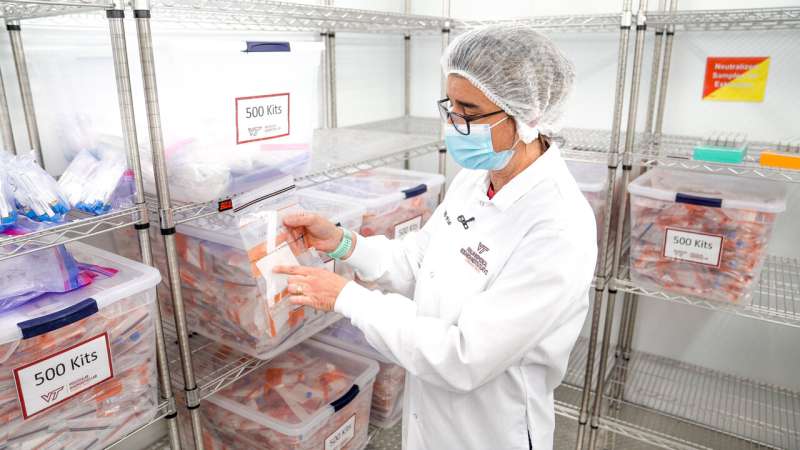The virus that causes COVID-19 is continually changing and accumulating mutations in its genetic code, and those changes are becoming more evident as we move into fall. The most recent data from the CDC, released on Oct. 15, shows that while omicron BA.5 remains the dominant variant, representing 67.9% of infections, more contagious variants are spreading rapidly nationwide.
"We can expect more variants to come, and probably from the genomic standpoint, they are going to look more aggressive," said Carla Finkielstein, director of the Molecular Diagnostics Lab at Virginia Tech's Fralin Biomedical Research Institute.
Omicron BQ.1 and BQ.1.1 represent 11.4% of all COVID-19 infections for the week ending Oct. 15, double what they were the previous week. The next CDC data release is scheduled for Friday, Oct. 21.
Finkielstein conducts research on COVID-19 mutations and is following not only BQ.1 and BQ1.1, but spinoff, immune-evasive variants. One of growing concern is XBB, which represents two different strains of omicron. The World Health Organization reports that XBB has been identified in 26 countries, including the U.S.
"Genomic surveillance is critical to maintain the quality of tests available in the marketplace and to guide our response," said Finkielstein. "The advantage is that we have highly effective vaccines and a large immunized population. If needed, new vaccines will be easy to customize."
Carla Finkielstein is a professor at Virginia Tech and director of the Molecular Diagnostics Lab at the Fralin Biomedical Research Institute at VTC.
Finkielstein improved speed and efficiency of identifying suspected COVID 19 variants through rapid mutational analysis. After quickly identifying the COVID-19 variants, Finkielstein relays the information to Department of Health personnel that same day, thereby giving the health workers an idea of the severity and transmissibility of a variant.
With quick understanding of transmissibility of a particular variant, health workers are better prepared to deal with changing health risks. Later she does whole genome sequencing to confirm the initial analysis. When the pandemic first emerged, Finkielstein anticipated the limitations of existing RNA testing methods and designed testing primers that detected three genes of the virus in lieu of the single gene detected by the CDC testing kit, making it possible both to provide more accurate results and detect various mutations of COVID-19.
- alf9872000
-

 1
1



Recommended Comments
There are no comments to display.
Join the conversation
You can post now and register later. If you have an account, sign in now to post with your account.
Note: Your post will require moderator approval before it will be visible.